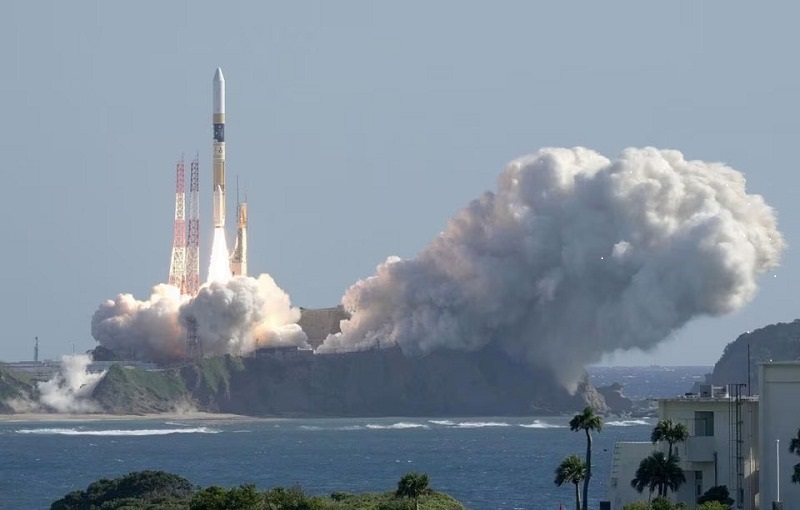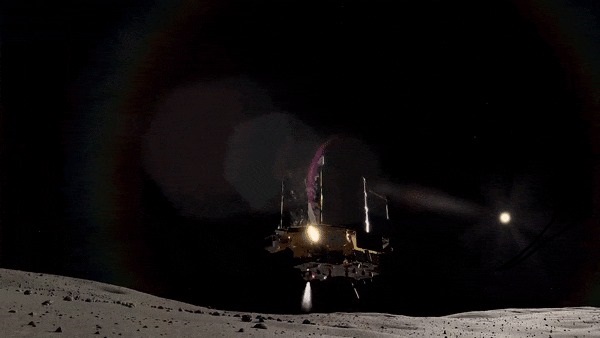
18 Jan Japan’s Mission to the Moon with Precision: An Exciting Journey
Japan, a country known for its cool gadgets and advanced technology, is doing something really cool in space! They’re getting ready for a super special mission to land on the moon. They’re calling it the ‘moon sniper’ landing because it’s all about being super precise and hitting the right spot on the moon.
Table of Contents
Why Go to the Moon?
You might be wondering, why are they so interested in the moon? Well, the moon is like Earth’s space buddy, and studying it can teach us a lot about space and our own planet. Japan wants to be super careful and land in just the right spot to learn the most they can.
Awesome Space Technology
So, how are they planning to do this? Japan mission has this amazing spaceship, and it’s like a space ninja – really sneaky and precise. This spaceship has super-smart computer system that guide it, making sure it lands exactly where it’s supposed to. The technology they’re using is so cool; it’s like a high- tech space adventure.
Why Does Precision Matter?
Being precise is like hitting the bullseye in a game. It’s important because the moon isn’t flat like a pancake. It has bumps, holes, and all shorts of things on its surface. If they’re not precise, the spaceship might crash into something, and that’s a big no-no. Being spot-on helps keep everything safe and makes the mission successful.
Discovering Moon Secrets
Japan’s not just going to the moon for fun; they want to uncover its secrets. The spaceship is packed with tools and gadgets to study the moon’s dirt, rocks, and everything in between. It’s like a lunar detective, trying to figure out how the moon came to be and what it’s made of.
Teamwork Makes the Dream Work
Going to space is a big deal, and Japan is not doing it alone. They’re teaming up with friends from other countries to make sure everything goes smoothly. It’s like a space party where everyone brings something special to the table.
Japan hopes for success after multiple failed attempts
Japan wants to succeed in reaching the moon after facing multiple failures before. Despite setbacks, like losing contact with the Omotenashi probe during the US Artemis program last year, Japan is still optimistic. In April, a Japanese start-up tried to be the first private company to land on the moon, but it didn’t work out. The recent Japanese launch happened after India successfully landed the Chandrayaan-3 spaceraft near the moon’s south pole, making India as the first country to do so. Right now, only India, the US, Russia, and China have safely landed spacecraft on the moon.
Let's Talk to Everyone
Japan wants everyone to be excited about their space mission. They’re not keeping it a secret! They’re telling kids, adults and everyone in between about their cool mission. They’re doing events, showing live videos, and even making it a learning adventure for students. It’s like inviting the whole world to watch and learn about space.
Space Challenges and Solutions
Space is not an easy place to go. There are lots of challenges like tricky space weather and strange space rocks. But Japan is like a space superhero-they’re thought about everything. They have plans for when things get tough, and they’re ready to solve any problems that might pop up.
What Does This Mean for Everyone?
So, why should we care about Japan’s moon mission? Well, it’s not just about them; it’s about all of us. Learning about the moon help us understand more about space and our own planet. Japan’s success can inspire kids everywhere to dream big and maybe even become space scientists one day.
Countdown to Excitement
As the days tick down to the big ‘moon sniper’ landing, the whole world is buzzing with excitement. Japan is showing us that no dream is too big, and with a bit of science and a lot of teamwork, we can do amazing things. So, let’s all join in the cheer for japan as they shoot for the stars and make history on the moon!
JAPAN'S ATTEMPT AT PRECISION LANDING

Japan is working on landing a spacecraft on the moon very prescisely. They have Smart Lander for Investigating Moon (SLIM) that’s designed to land within 100 meters (328 feet) from a specific spot on the moon. This is a big improvement compared to the usual landing range of several Kilometers.
JAXA, the Japanese space agency, says that the SLIM lander is a significant step forward. It allows prople to land not just anywhere, but excatly where they want to land. They pointed out that landing so precisely on objects with strong gravity, like the moon, is something new and hasn’t been done before anywhere in the world.
JAXA also talked about how this kind of precise landing could be important for future missions to planets that don’t have as many resources as the moon.
Beside the SLIM lander, the rocket is carrying a research satellite made in collaboration with JAXA, NASA, and the European Space Agency. This satellite will abserve something related to ”hot,” but the information is cut off in the provided text.
Japan's 'Moon Sniper' Mission to the Moon: What It Means
Japan’s ambitious ‘Moon’ Sniper’ mission to land a rover on the moon is a big deal in space exploration. it shows Japan’s commitment to Learning more about the moon and advancing technology. Let’s understand why this mission is important and what it could mean for science, technology, and cooperation between countries.
Exploring the Moon
Japan’s ‘Moon Sniper’ mission aims to put a rover on the moon’s surface to do experiments and observations. by exploring new parts of the moon, the mission hopes to learn more about its rocks, makeup, and history. This knowledge helps us understand the moon better and prepares us for future missions with astronauts.
Showing Off Technology
The ‘Moon Sniper’ mission demonstrates Japan’s skills in space exploration and robots. From landing the rover precisely to letting it move around on its own and do science, the mission is the result of lots of hard work in space and robot technology. By doing this, Japan shows it’s a leader in space science and tech.
Working Together with Other Countries
The ‘Moon Sniper’ mission isn’t just about japan-it’s about many countries working together. japan is teaming up with the united States, Europe, Canada, and others to explore space together. By sharing what they know and working together, countries can do more in space than they could alone.
Finding New Ways to Make Money
Going to space can also be good for business. japan and other countries see opportunities in things like mining moon rocks, space tourism, and even living on the moon. By investing in space exploration, japan hopes to create new jobs and businesses in the space industry.
Inspiring people to Dream Big
japan’s ‘Moon Sniper’ mission is exciting for people who dream of exploring space. By doing something new and challenging, the mission encourages others to get interested in science and technology. Japan wants to inspire the next generation of scientists, engineers, and astronauts.
Surprising Discovery of Water
Recent findings have shown that there’s some water on the Moon, which was unexpected. it’s not a lot, and it’s mostly in shaded areas near the North and South poles. But this discovery is important for future missions to the Moon and possibly using its resources.
Changes Over Time on the Moon
Studying rocks and features on the Moon has helped scientists understand how it has changed over time. it seems that early on, the Moon had lots of volcanic activity that shaped its surface. As time passed, volcanic activity Slowed down, and the Moon started getting hit by asteroids and comets, which still affect it today.
in conclusion
Japan’s ‘moon sniper’ mission is like a cool space adventure that everyone can enjoy. With their high-tech spaceship and a heart full of curiosity, they’re showing us that exploring space is not just for scientists-it’s for all of us. As we wait for the spaceship to land, let’s keep our fingers crossed and our eyes on the sky, ready for the next chapter in our cosmic journey.


No Comments